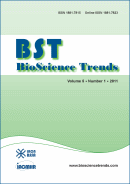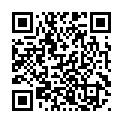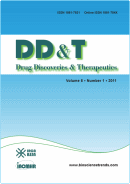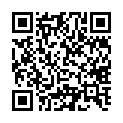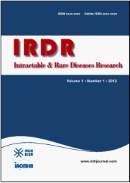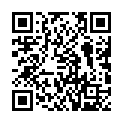Drug Discov Ther. 2025;19(5):337-345. (DOI: 10.5582/ddt.2025.01084)
Comparing gene-targeting efficiency of Agrobacterium tumefaciens-mediated transformation and electroporation in the pathogenic fungus Trichosporon asahii JCM2466
Matsumoto Y, Nakayama M, Shimizu Y, Koganesawa S, Kanai H, Hayashi W, Matsuo T, Yamada T, Sugita T
Trichosporon asahii is a pathogenic fungus that causes severe deep-seated fungal infections in neutropenic patients. Ku70, a key component of the non-homologous end-joining (NHEJ) pathway involved in the repair of DNA double-strand breaks, influences gene-targeting efficiency in T. asahii MPU129 strain using electroporation, a gene transfer method. Although phenotypic traits such as morphology and biofilm formation vary among T. asahii strains, the impact of different gene transfer methods on gene-targeting efficiency remains poorly characterized. In this study, we compared the gene-targeting efficiency of Agrobacterium tumefaciens-mediated transformation (ATMT) and electroporation. In T. asahii JCM2466 (CBS2479), a strain with high hyphal-forming ability, the ku70 gene-deficient mutant exhibited a higher gene-targeting efficiency via ATMT than the wild-type strain when generating a cnb1 gene-deficient mutant. The cnb1 gene encodes the β-subunit of calcineurin. In contrast, in the ku70 gene-deficient background of T. asahii JCM2466, cnb1-deficient mutants could not be generated by electroporation. The gene-targeting efficiencies of ATMT and electroporation in the ku70 gene-deficient mutant of T. asahii JCM2466 were 18% and 0%, respectively. The cnb1 gene-deficient mutants exhibited sensitivity to high temperature and several stress-inducing compounds. These results suggest that ATMT is a suitable gene transfer method for generating gene-deficient mutants in the ku70-deficient T. asahii JCM2466 background. Therefore, the choice of gene transfer method should be carefully tailored to the genetic background and phenotypic characteristics of each T. asahii strain.


